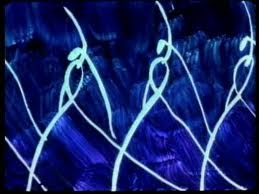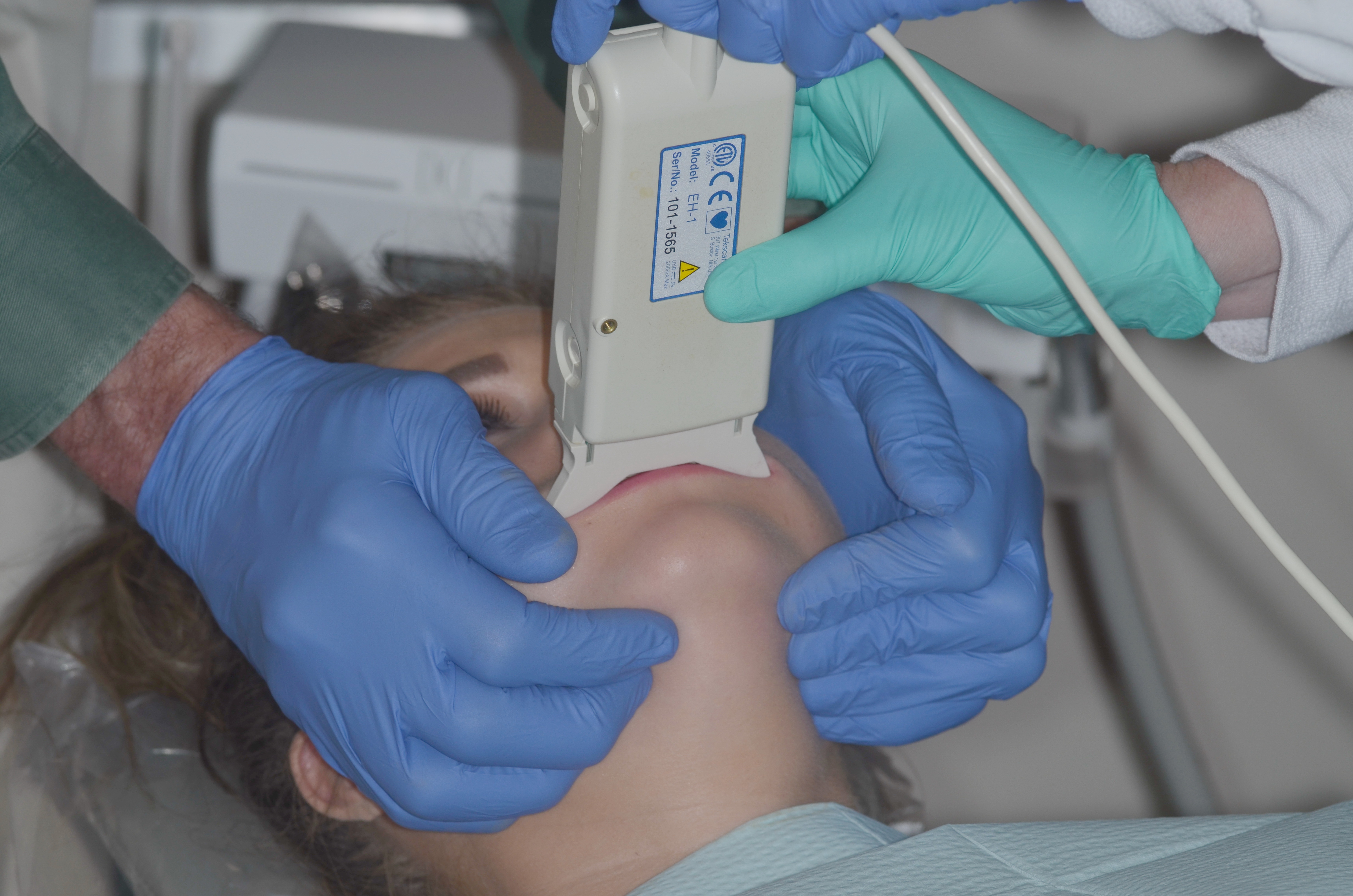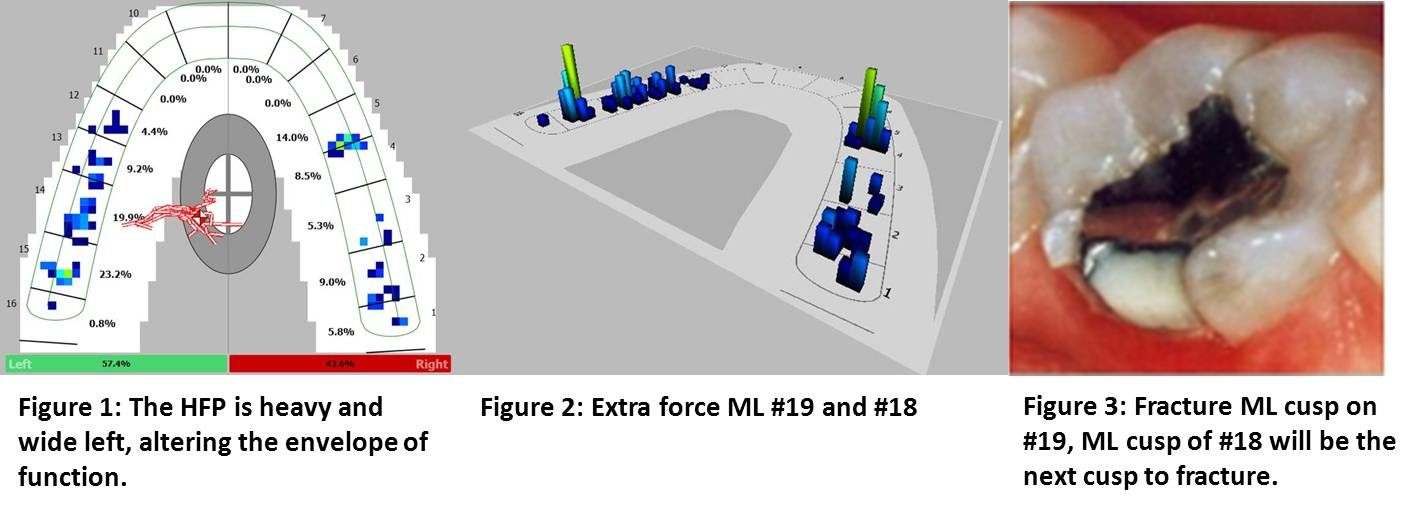The line on a force distribution scan shows the direction in which force travels on an occlusion.

Force scans intensity and point distribution tell us where the force ‘landed’. Points by themselves do not show force direction.
The lines of a force distribution scan display the point of origin and the direction in which force travels on an occlusion.
Force direction is seen in 2D following the Center of Force (CoF) marker trajectory.
Lines provide diagnostic information about a possible skeletal asymmetry and the probable presence of destructive force. Intensity is distributed across a bite as more teeth touch during a force distribution cycle. Lines between points tell us if the dominant force stays in one area or is transferred across the arch.

It is very rare to find patients with two perfectly-positioned maxillary bones, two perfectly-shaped condyles, a mandible and a ramus functioning in pure harmony during every movement. Most, if not all patients, have two bites.
The first one is habitual. It occurs when the teeth are engaged in centric occlusion. It is recorded during a point/intensity scan. For a description of the technique on how to capture a Habitual Force Distribution Pattern (HFDP), see Force Cycle Patterns.
The second bite is skeletal. It occurs when both condyles are seated in a healthy, braced position. Bimanual manipulation allows us to place a mandible in a relatively neutral position, giving us the ability to line up bones, ligaments, and muscles. If both condyles have good rotation before translation, we have the ability to measure the skeletal bite. This centric relation occlusion can be recorded with a T-Scan to produce a Skeletal Force Distribution Pattern (SFDP).
Recording a SFDP allows us to find the first point of contact called the anterior control which starts the closure guidance. Recording the next few contacts is critical because they indicate the direction of the slide into centric occlusion to which the condyles and mandible must adapt. Line force scans allow us to analyze the following occlusal slides:
• CR-CO
• Skeletal to MIP
• Left and right lateral
• Protrusive/retrusive
• Crossbite


